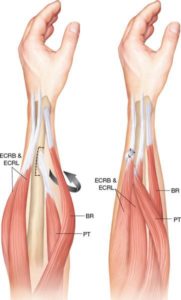When a person sits or lay in bed for longer periods of time without moving or relieving pressure then the tiny vessels inside skin squeeze. As result flow of oxygen and important nutrients stop which results in death of skin cells of that area. An ulcer is formed and such kind of ulcer is known as pressure sores, bed sore, skin ulcer or decubitus ulcer.
A person with limited mobility or impaired sensations is at high risk of developing skin sores. As both of these problems develop after spinal cord injury so the chances of bed sores are very high in people suffering from spinal cord injury . Pressure sores can cause death. Infect it is one of the main reason of death of people suffering from spinal cord injury.
Areas of pressure sores
The areas of body with bony prominence are at high risk to skin sores. The bones apply pressure on the skin from inside and when there is a hard surface for outside too then vessels in the skin are blocked. The body tries to send more blood to that area which results in swelling of that area and increasing chances of skin sore formation.
When a person lay in prone position then the areas that are at high risk of developing bed sores are back of head, shoulder blades, hip and heels. When laying on side, then common areas of pressure sores formation are ear, shoulder, elbow, hip and areas between knees and ankles. While sitting on wheel chair then shoulder blades, lower back, hip, sacrum and underside and back of heels are at high risk of developing skin sore.
Causes and prevention of pressure sores
Pressure sores can be formed due to various reasons some of which are listed below
1.Pressure. It is the big cause of pressure ulcer. So pressure must be released at regular intervals while in wheelchair or bed. A good quality mattress in bed and good cushion in wheelchair can help in reducing pressure on bony areas.
2.Friction. Friction can damage skin which later on can turn into bed sores. So alot of care should be taken while moving yourself in bed or transferring from one surface to other.
3.Wetness. A wet skin has greater chances of pressure sores development. So you should keep your skin dry after taking bath etc.
4.Poor nutrition .With poor nutrition skin can become weak due to which its pressure absorbing capabilities decreases. So always take balance diet to keep your skin healthy.
5.Cleanliness. There will be germs on skin if it is not clean and in case of any skin breakdown germs will go inside and produce infection. So always take great care of cleanliness.
Signs of bed sores
The primary sign of pressure sores is a redden area on the skin which may feel hard or hot. For those with dark complexion the area may look shiny. At this stage everything can be reversed and just release of pressure can heal the skin. But if care is not taken and pressure is not released then a blister will form. With further carelessness things will get worse and a hole will form. That will go deeper and deeper.
Stages of pressure ulcers

Stage 1. In stage 1 pressure ulcer the skin is red but not broken. The change in color does not fade away after 30 minutes. At that stage it can be treated easily by releasing pressure from the area.
Stage 2. In stage ii pressure ulcer the outer layer of the skin is damaged. Drainage may also be present. At this stage pressure should be removed from the area and the wound should be cleaned with water or saline and then dried.
Stage 3. In stage iii pressure ulcer both the layers of skin are broken. The hole goes deep into the skin but doesn’t touch the bone. Doctor must be contacted at this stage.
Stage 4. In stage iv pressure ulcer the hole goes deeper and touches the bone. This stage is life threatening and doctor may do surgery.
Cure of pressure sores
If the pressure sore is at initial stages and any skin is not broken down then it can be treated by just releasing pressure. Try to know the cause due to which pressure on the area of skin is forming and avoid that cause. Go from wheelchair to bed and change position at short intervals. Examine the skin more regularly and after short time.
If the skin is open then wash the wound with soup or saline water. Use antibacterial ointment . Cover the area with dry and clean bandages and change the bandages twice a day
Contact doctor in case of further complications. Doctors may have to do surgery to remove dead tissues and you may have to lay in prone position for longer periods of time.
Read also: Autonomic dysreflexia















